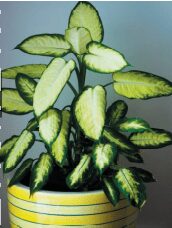
1. It’s time To Exercise Your Right To Vote. Whether you vote by mail or go to a voting booth, don’t forget to exercise you right to choose next Tuesday. Every vote counts and if you don’t vote, don’t you dare to complain.
2 Notice of Proposed Rulemaking for the Water Quality Standards for Surface Waters. ADEQ’s Notice of Proposed Rulemaking for the Water Quality Standards for Surface Waters (18 A.A.C. 11, Article 1) has published in the Arizona Administrative Register. You can read the Notice of Proposed Rulemaking available here: http://www.azdeq.gov/function/laws/draft.html#water.

The Clean Water Act requires that states review, modify as appropriate, and adopt surface water quality standards for “waters of the U.S.” at least once every three years, subject to approval by the U.S. Environmental Protection Agency (EPA). ADEQ’s last rulemaking for the surface water quality standards was in 2009. ADEQ is seeking to amend errors or clarify language from the 2009 rules changes. The Governor’s Office authorized this rulemaking to proceed according to Executive Order 2015-01 (Internal Review of Administrative Rules; Moratorium to Promote Job Creation and Customer-Service-Oriented Agencies).

3. End Of Year Charitable Contributions. If you are looking for a charitable contributions that can be used as tax write-offs, consider wonderful charities such as Heifer International, your local Watershed organization (if they are a 501 (C)(3), or EnviroInsight.org. Your donation is a win-win. For the non-profit organization and you, at tax time. Make your donation before January 1st.
4. Congressional Republicans Demand Plan For Collecting El Niño Water. The Republican members of California’s delegation are demanding a government plan to store the deluge of water that could come with El Niño this winter.
Fourteen GOP lawmakers will send a letter to President Obama and Gov. Jerry Brown on Thursday asking for specifics about how federal and state agencies expect to capture, save and transport water.
A new federal forecast released last week showed El Niño is continuing to strengthen, with experts saying it’s on track to potentially produce record rainfall across the state. Rep. Devin Nunes (R-Tulare) said the governor has opposed a plan approved by the House, and the Senate hasn’t proposed one of its own.
“We need him to offer up solutions,” Nunes said in an interview Wednesday. “If it does rain this winter and we let it all go to the ocean again like we did three years ago, the whole state is going to run out of water. A plan is not opposing what we’re trying to propose. He has a responsibility as the governor of California to come clear with what his plan is.”
He said that without a plan, Brown should identify which farms and homes are going to lose and what land is going out of production. “It’s either-or. You show us how you’re going to get the water, or you show us the impacts and how we’re going to deal with the impacts,” Nunes said.
The delegation letter specifically asks what plans federal and state agencies have in place to capture precipitation from El Niño, or what the timeline is to develop a plan if one doesn’t already exist. It also asks if the agencies would lift regulations that have limited water exports from northern California to central and southern California.
“We believe that federal and state environmental policies and regulations have negatively impacted California’s current situation by denying us the ability to capture water for human use and consumption now and to better prepare ourselves for situations likes the current drought,” reads the letter, obtained by the Los Angeles Times.
California Department of Water Resources spokesman Ted Thomas said it is up to the federal government whether some of those regulations are lifted during the drought, particularly those that limit water from the Sacramento-San Joaquin River Delta.
Rep. Dana Rohrabacher (R-Costa Mesa) said California needs to build an infrastructure to store water and get through the drought.
“People in the Central Valley, and throughout California are truly suffering. The concept of diverting that much needed water into the ocean is irrational and infuriating,” Valadao said in a statement.

5. Green Drinks. November 3rd, 2015 at 5:30 PM at Fate Brewery – 1312 N. Scottsdale Rd., Scottsdale Join us for our monthly networking event – Green Drinks!
Our topic this month is Green Agriculture. Mix and mingle, share and learn!

6. Seven Houseplants That LoveTo Live In Dark Places In Your Home.
1. Calathea
It’s patterned leaves (in colors like rose, white and yellow) make this plant a welcome addition to any room -and too much direct sun might actually fade its nice markings.

2. Dieffenbachia
Filtered light is best for this plant. Try using a curtain as a barrier between it and the sun, especially during the spring and summer when the plant is producing new, tender leaves.

3. Dragon Tree Spiky leaves that grow upwards and have a red outline make the name of this plant absolutely perfect. But direct sunlight could damage them — so give this guy some sun and some shade.

4. Spider Plants This
plant’s adaptability makes it super easy to grow and therefore quite popular — it’s also easy to propagate and share with others. It can stand up to a lot of neglect, and will thrive in indirect light.

5. Heart-Leaf Philodendron
The “sweetheart plant” (a nickname given because of the shape of its glossy leaves) can stand dim rooms, but requires pinching to prevent it from growing in long, single stems

6. Snake Plant
While the name is fun, this succulent is pretty tame (read: easy!) when it comes to maintenance. More light will easy!) when it comes to maintenance. More light will help it grow, but it can tolerate darkness — just watch help it grow, but it can tolerate darkness — just watch out for root rot caused by overwatering.

7. Cast-Iron Plant 7. Cast-Iron Plant The leathery leaves on this houseplant are super tolerant not The leathery leaves on this houseplant are super tolerant not only to low light but also heat, cold, you name it. However, only to low light but also heat, cold, you name it. However, patience is required since it grows really slowly.

7. AZ Water Association November Luncheon Programs, Tucson and Tempe
Southern Arizona Technical Luncheon Program November 5, 2015 from 11:30am – 1:00pm Inn Suites Tucson City Center, Tucson, AZ
Topic: Potential Potable Reuse of Reclaimed Municipal Water Presenter: John Campbell, AECOM
Information and Registration: http://www.azwater.org/events/event_details.asp?id=691549. Contact: Carol Johnson, carol.johnson@pima.gov
Phoenix Technical Luncheon Program
November 10, 2015 from 11:30am – 1:00pm at SRP Pera Club, Tempe, AZ
Topic: A Regional Water Campus… Realization Through Collaboration Presenter: Jeff Prevatt & Barbara Escobar, Pima County
The presentation will provide an overview of the Water Campus that is being created in southern Arizona. The mission of the Water Campus is to advance water quality, treatment technologies, employee development, environmental stewardship and economic development at a central location and firmly establish Arizona as a premier water technology cluster. The public-private partnerships at the heart of the Water Campus will help to nurture and develop concepts from early stage bench testing all the through full scale piloting of technologies.
Information and Registration: http://www.azwater.org/events/event_details.asp?id=702867&group=
Contact: Tracy Grunden, Tracy.Grunden@burgessniple.com
8. Arizona State Forestry – Invasive Plant Grant Program Applications Due November 13th. Arizona State Forestry with funding provided by the USDA Forest Service is soliciting proposals from $10,000 to $20,000 to treat invasive and noxious plant invasions that threaten forested or woodland areas.
– Funds are awarded on a cost matching-basis, and this program requires 50% (1:1) match from a non-federal source.
– Priority will be given to projects that demonstrate partnerships (especially with a Cooperative Weed Management Area) and projects adjacent to National Forest System (NFS) lands or that will compliment NFS projects.
Attached for your information, use and distribution are the grant Information and Guidelines, Q&A sheet and Application Form. The documents have also been posted on our website at https://azsf.az.gov/grants/ forest-health/ipg. This program is directed to units of local government, non-profit organizations 501(c)3, and public educational institutions. Individuals working in partnership with their neighborhood association may also apply if they work with one of the previously stated groups.
9. 2015 Southwest Climate Summit. November 2-3, 2015, Holiday Inn Capitol Plaza – Sacramento, California
Theme: “Bridging the gap – from science to management action in climate adaptation”
Join us for the 2015 Southwest Climate Summit where we’ll move Climate-Smart Conservation forward by bringing together managers and scientists from across the Southwest to:
Discover emerging climate science
Explore adaptive management
Share Climate-Smart Conservation results
Discuss management and policy responses
The conference will feature presentations by leading thinkers, oral and poster sessions, and workshops designed to engage participants in building collaborative partnerships for resilient southwestern landscapes.
The 2015 Climate Summit is an opportunity for natural resource managers, scientists, public agencies, tribes, non-governmental organizations, and the private sector to share information and expand their networks. The conference will be organized to discuss climate sciences connection to natural resources and management actions.
Concurrent Sessions include climate science and management discussion on:
Southwest Ecosystems
Freshwater Ecosystems
Coastal Ecosystems
Montane and Forested Ecosystems
Rangelands and Arid Ecosystems

Planning
-Tribal Climate Adaptation Planning
– Landscape Conservation Design
– Decision Support for Adaptation
Models
– Which Climate Future? Temporal and Spatial Downscales
– Management Relevant Climate Models
– Effective Science-Management Partnership Models
Please contact Mark Schwartz (mwschwartz@ucdavis.edu) or Rebecca Fris (rebecca_fris@fws.gov), 2015 Southwest Climate Summit Program Co-chairs, for questions or concerns.
10. The History Of Halloween. Ancient Origins of Halloween. Halloween’s origins date back to the ancient Celtic festival of Samhain (pronounced sow-in). The Celts, who lived 2,000 years ago in the area that is now Ireland, the United Kingdom and northern France, celebrated their new year on November 1. This day marked the end of summer and the harvest and the beginning of the dark, cold winter, a time of year that was often associated with human death. Celts believed that on the night before the new year, the boundary between the worlds of the living and the dead became blurred. On the night of October 31 they celebrated Samhain, when it was believed that the ghosts of the dead returned to earth. In addition to causing trouble and damaging crops, Celts thought that the presence of the otherworldly spirits made it easier for the Druids, or Celtic priests, to make predictions about the future
To commemorate the event, Druids built huge sacred bonfires, where the people gathered to burn crops and animals as sacrifices to the Celtic deities. During the celebration, the Celts wore costumes, typically consisting of animal heads and skins, and attempted to tell each other’s fortunes. When the celebration was over, they re-lit their hearth fires, which they had extinguished earlier that evening, from the sacred bonfire to help protect them during the coming winter.
By 43 A.D., the Roman Empire had conquered the majority of Celtic territory. In the course of the four hundred years that they ruled the Celtic lands, two festivals of Roman origin were combined with the traditional Celtic celebration of Samhain. The first was Feralia, a day in late October when the Romans traditional Celtic celebration of Samhain. The first was Feralia, a day in late October when the Romans traditionally commemorated the passing of the dead. The second was a day to honor Pomona, the Roman traditionally commemorated the passing of the dead. The second was a day to honor Pomona, the Roman goddess of fruit and trees. The symbol of Pomona is the apple and the incorporation of this celebration into goddess of fruit and trees. The symbol of Pomona is the apple and the incorporation of this celebration into Samhain probably explains the tradition of “bobbing” for apples that is practiced today on Halloween.
On May 13, 609 A.D., Pope Boniface IV dedicated the Pantheon in Rome in honor of all Christian On May 13, 609 A.D., Pope Boniface IV dedicated the Pantheon in Rome in honor of all Christian martyrs, and the Catholic feast of All Martyrs Day was established in the Western church. Pope Gregory III martyrs, and the Catholic feast of All Martyrs Day was established in the Western church. Pope Gregory III (731–741) later expanded the festival to include all saints as well as all martyrs, and moved the observance from May 13 to November 1. By the 9th century the influence of Christianity had spread into Celtic lands, from May 13 to November 1. By the 9th century the influence of Christianity had spread into Celtic lands, where it gradually blended with and supplanted the older Celtic rites. In 1000 A.D., the church would make November 2 All Souls’ Day, a day to honor the dead. It is widely believed today that the church was at- November 2 All Souls’ Day, a day to honor the dead. It is widely believed today that the church was attempting to replace the Celtic festival of the dead with a related, but church-sanctioned holiday. All Souls. All Souls Day was celebrated similarly to Samhain, with big bonfires, parades, and dressing up in costumes as saints, Day was celebrated similarly to Samhain, with big bonfires, parades, and dressing up in costumes as saints, angels and devils. The All Saints Day celebration was also called All-hallows or All-hallowmas (from angels and devils. The All Saints Day celebration was also called All-hallows or All-hallowmas (from Middle English Alholowmesse meaning All Saints’ Day) and the night before it, the traditional night of Middle English Alholowmesse meaning All Saints’ Day) and the night before it, the traditional night of Samhain in the Celtic religion, began to be called All-hallows Eve and, eventually, Halloween. Samhain in the Celtic religion, began to be called All-hallows Eve and, eventually, Halloween.
In the second half of the nineteenth century, America was flooded with new immigrants. These new immigrants, especially the millions of Irish fleeing Ireland’s potato famine of 1846, helped to popularize the celebration of Halloween nationally. Taking from Irish and English traditions, Americans began to dress up in costumes and go house to house asking for food or money, a practice that eventually became today’s “trick-or-treat” tradition. Young women believed that on Halloween they could divine the name or appearance of their future husband by doing tricks with yarn, apple parings or mirrors.
In the late 1800s, there was a move in America to mold Halloween into a holiday more about community and neighborly get-togethers than about ghosts, pranks and witchcraft. At the turn of the century, Halloween parties for both children and adults became the most common way to celebrate the day. Parties focused on games, foods of the season and festive costumes. Parents were encouraged by newspapers and community leaders to take anything “frightening” or “grotesque” out of Halloween celebrations. Because of these efforts, Halloween lost most of its superstitious and religious overtones by the beginning of the twentieth century. Source: http://www.history.com/topics/halloween/history-of-halloween
